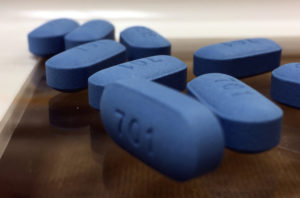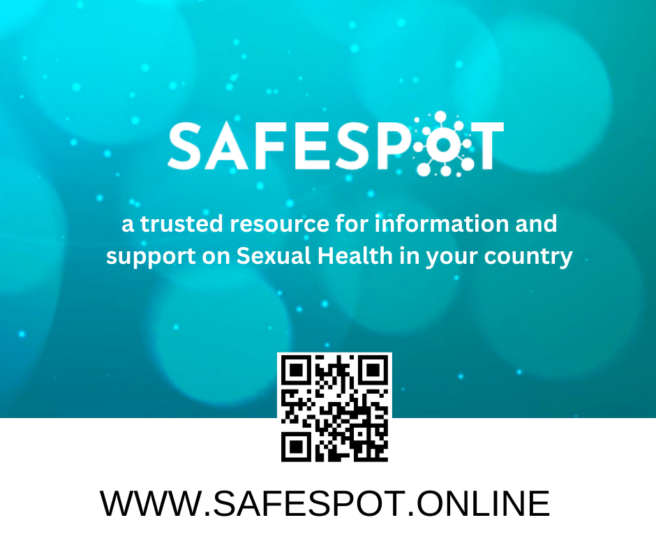 Author: Marieke Bak
Author: Marieke Bak
Pre-exposure prophylaxis (PrEP) is a new HIV prevention method that consists of a daily pill taken by HIV-negative people to reduce their risk of becoming infected with HIV. PrEP is highly effective in preventing HIV transmission, as scientific research shows. A large international study among gay men and transgender women, the so-called iPrEx trial suggested that PrEP can reduce the risk of HIV infection by at least 92% when the pills are taken consistently. PrEP is also effective when used by heterosexual men and women, as well as by people who inject drugs.
Although PrEP is more expensive than other HIV prevention methods, it can be a cost-effective tool, especially when delivered to people at high risk of HIV. By preventing the costs of lifetime HIV treatment, PrEP may even lead to healthcare savings, especially when the drug patents expire and the cost drops.
Moreover, PrEP is the first method of HIV prevention that is directly under the control of the at-risk individual. This is in contrast with treatment as prevention (TasP), which is dependent upon partners’ HIV treatment adherence to ensure suppressed viral load. Besides, because PrEP separates the act of prevention from the sexual encounter, it can be used without sexual partners knowing and provides additional protection when condoms are not used consistently.
The World Health Organization now recommends that PrEP should be offered as a choice to key populations affected by HIV as well as to anyone else at substantial risk of HIV infection.
TRANSFORMING HIV INFECTION
PrEP is a pill consisting of anti-retroviral drugs that needs to be taken every day in order to be effective. Currently, the only drug approved for use as PrEP is sold by Gilead Sciences and is called Truvada, which consists of a combination of tenofovir and emtricitabine (TDF/FTC). Truvada was first approved for prevention in 2012 in the United States of America.
In contrast to PEP, or post-exposure prophylaxis, PrEP is taken before exposure to HIV to prevent any possible transmission. PrEP works by blocking an enzyme called HIV reverse transcriptase, thereby preventing HIV from establishing itself in the body. While PEP can be thought of as a “morning-after pill” for HIV prevention, PrEP can be compared to the contraceptive pill that is taken every day. Similarly, PrEP may transform HIV infection just like the pill transformed family planning.
The most common side effects of Truvada for PrEP are nausea, vomiting, dizziness, headache and fatigue, although these symptoms usually resolve within a few weeks. Some people in trials also experienced small changes in kidney function or a decrease in bone mineral density. An updated version of Truvada was created that contains a new form of tenofovir, which is thought to be safer for bones and kidneys. At the moment, the so-called “Discover study”, is being set up in North America and Europe to investigate the new PrEP medicine called Descovy.
By the way, PrEP does not protect from sexually transmitted diseases (STDs). Fears that PrEP might be used as a “party drug” exist. However, in the iPrEx study as well as in a meta-analysis by the World Health Organisation, it was shown that PrEP does not lead to an increase in the number of STDs and has no effect on condom use. Rather, PrEP reduces the fear and anxiety that often comes with sexual activity for those at high risk of HIV.
However, because PrEP is not 100% effective and because it does not protect from STDs, it should not be used as a standalone prevention method. According to WHO guidance, PrEP should be offered as part of so-called “combination prevention” which includes the use of condoms as well as regular follow-ups and HIV testing.
PREP IN EASTERN EUROPE AND CENTRAL ASIA
Despite the recommendation to offer PrEP to people at high risk of HIV infection, the global availability of PrEP remains limited. The PrEP target set by UNAIDS in their strategy on ending the HIV pandemic is to get three million people on PrEP by 2020. However, only 2% of this target had been reached in June 2016.
At the moment, Truvada for PrEP has been approved in the United States, Canada, Australia, Peru, South Africa, Kenya, Zimbabwe, Israel, and the European Union. Approval is pending in Brazil and Thailand. In the European Union, PrEP has been approved by the European Medicines Agency (EMA) although the implementation of PrEP programmes is the responsibility of each member state separately. To date, only France and Norway have made PrEP available as part of their healthcare system. Scotland recently announced that it will do the same.
In Eastern Europe and Central Asia (EECA), PrEP is not available yet. However, demonstration projects are currently being set up in Georgia, Ukraine and Azerbaijan. These pilot studies consist of several phases. In Georgia, the first stage of PrEP implementation included a training session for those involved in the pilot, as well as the conducting of a needs assessment among Georgian men who have sex with men (MSM) and capacity building for local NGOs, before the actual start of the pilot in 2017. In Central Asian countries, there seems to be less interest in PrEP, although the Ministry of Health of Kyrgyzstan is planning to start an evaluation on the possibilities of introducing PrEP in the country.
Challenges of introducing PrEP in EECA may include the cost of PrEP, but also the high levels of stigma and discrimination in some countries. However, with HIV incidence in EECA rising by 57% between 2010 and 2015, treatment alone will not stop the epidemic. Given its proven effectiveness, providing PrEP to key populations can be a significant step in controlling the explosive growth of the HIV epidemic in this region.




